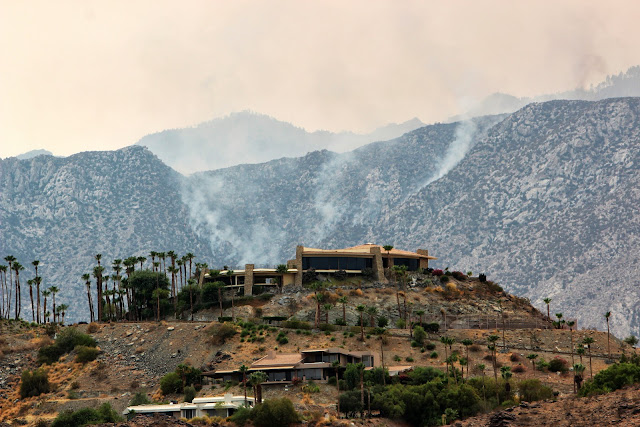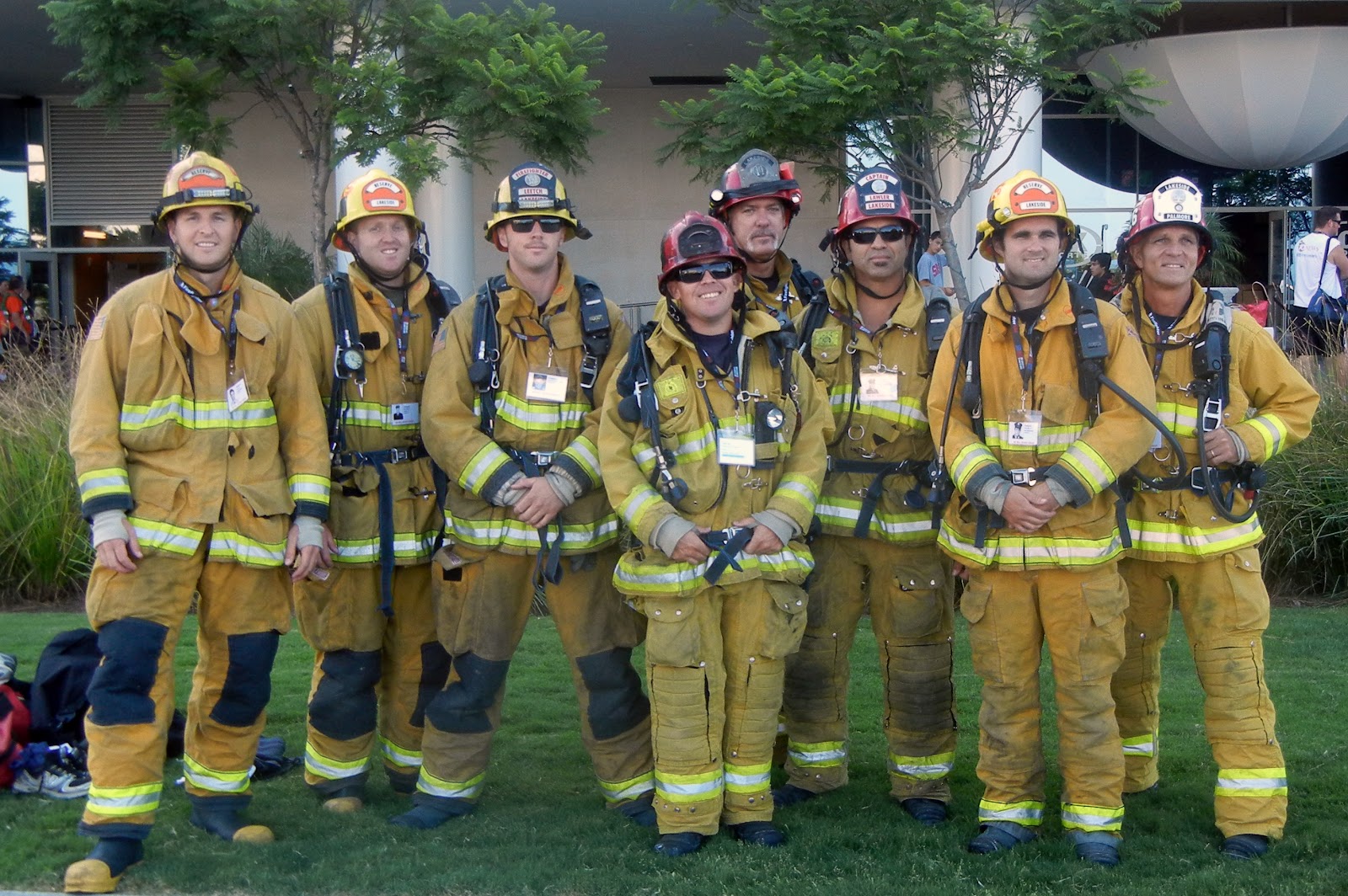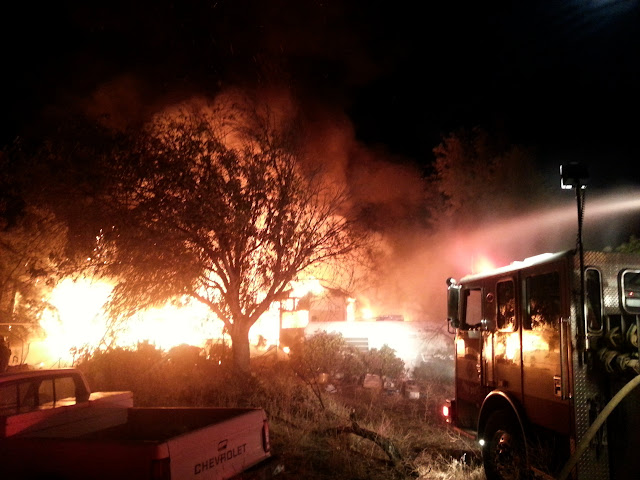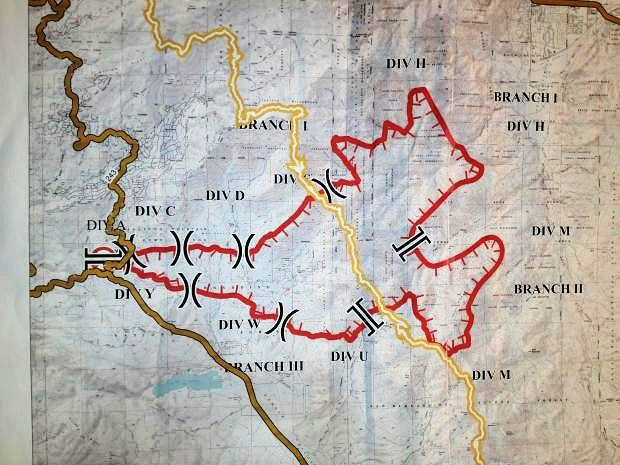San Bernardino National Forest-
On July 15th, 2013, at 1:43 PM, a wildfire in the community of
Mountain Center ignited in the area of Highway 243. The fire quickly spreads in light fuels where it eventually jumps the highway and spreads into the steep foothills of the San Jacinto Mountains. On that first day the fire grew from an initial 5 acres to an astounding 4,700 acres. Fire equipment from throughout the Southland was quickly mobilized to control this blaze that was now burning in pristine forest land.
 |
| The Mountain Fire on the first day photographed from Hemet. The circle of lights above the fire is an air attack plane coordinating night helicopter drops. |
In the predawn hours of July 16th the
Heartland Communications Center received a request to dispatch a strike team of brush engines to the fire. Apparatus from
Lakeside,
Santee,
Barona, Alpine, and Viejas quickly assembled and started the northward trek to Riverside County.
Upon arriving at the fire the crew was committed to an 8000' hose lay in Coldwater Canyon. Control of the fire in the area is essential to keep it from burning towards the community of Idyllwild. Crews were working in extreme terrain with ambient temperatures in the mid-90's. This assignment would occupy the bulk of there first 24 hours on the fire line.
 |
| The Mountain Fire makes a hard run upslope near the community of Garner Valley. |
 |
| The fire is burning in heavy fuels in steep conditions east of the community of Garner Valley. |
As of this posting the fire is approaching 15,000 acres, and has spread towards the community of Palm Springs. Unfortunately dwellings have been lost in the early hours of the fire, but crews have managed to safely evacuate multiple camps in the area.
 |
| An engine company from Corona stages near Palm Canyon in Palm Springs. Temperatures on this day were near 107 degrees with poor air quality. |
 |
| Fire burns in Andreas Canyon near Palm Canyon. Palm Springs is coated in a layer of ash falling like snow. |
 |
| Palm Springs spent most of the day in darkness under the smoke column. |
Strike Team 6440c could be committed to this incident for 14 days, but that will depend on the ability to control this fire burning in irreplaceable forest.
The video below is raw footage of the fire. It's provided to give our readers an opportunity to see the conditions firefighters are dealing with. It tends to be a little long so feel free to "fast forward" through some of the coverage.
We will update you as information becomes available. Tonight we have received information that Idyllwild is to be evacuated. The fire has grown to about 20,000 acres.
7/18/13 Update: The strike team has been assigned to Branch I, Division D. This is the perimeter area south of the town of Idyllwild. The crew will continue containment/mop-up operations. The strike team is working with hand crews that are cutting line between the fire and the town.
The bulk of the fire appears to have moved into the high country around the San Jacinto Wilderness. Some fire continues to work it's way down towards the desert floor.
 |
| Fire on the ridge line above Palm Springs. Fire planners have crews in the area should the fire make a downhill run. |
 |
| USFS has an information booth on Palm Canyon to keep locals informed. |

























